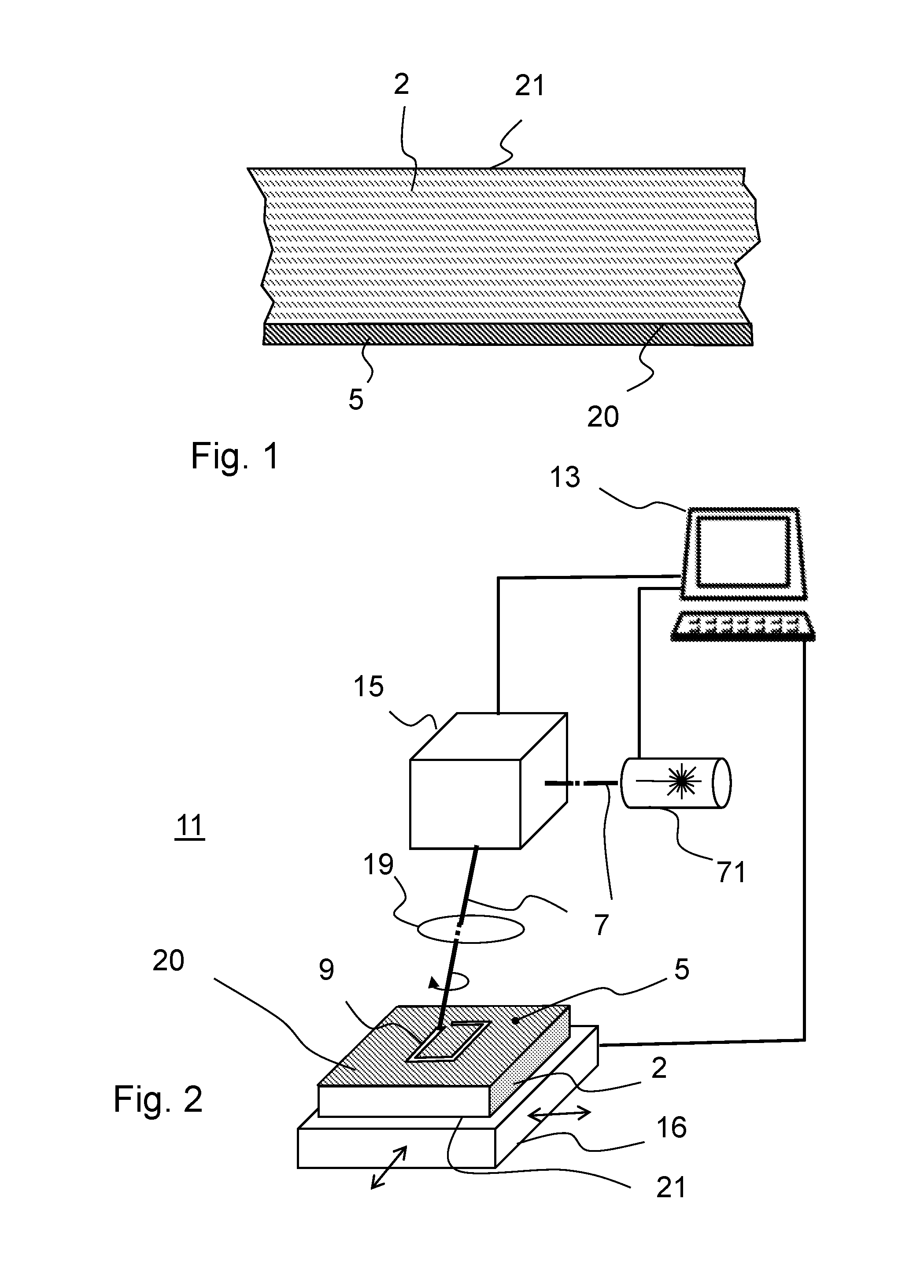Coated glass or glass ceramic article
- Summary
- Abstract
- Description
- Claims
- Application Information
AI Technical Summary
Benefits of technology
Problems solved by technology
Method used
Image
Examples
Embodiment Construction
[0026]For producing a glass or glass ceramic article according to the invention, initially a planar or sheet-like glass or glass ceramic substrate 2 is provided. Accordingly, the glass or glass ceramic substrate 2 has two opposite faces 20, 21. One of the faces is provided with an opaque or light non-transmissive layer 5, in the example shown in FIG. 1 this is face 20.
[0027]Particularly preferred coatings 5 are inorganic and / or inorganic-organic sol-gel coatings which form an oxidic network and contain decorative pigments, or which form a matrix of such an oxidic network with embedded decorative pigments after curing. Most preferred oxidic networks are SiO2 networks, or a SiO2 matrix. Optionally, the network may still contain organic radicals. However, the coating 5 is yet inorganic or at least predominantly inorganic. The decorative pigments are preferably inorganic as well.
[0028]Such coatings are highly durable and temperature resistant and can be produced in an almost unlimited n...
PUM
| Property | Measurement | Unit |
|---|---|---|
| Fraction | aaaaa | aaaaa |
| Fraction | aaaaa | aaaaa |
| Angle | aaaaa | aaaaa |
Abstract
Description
Claims
Application Information
 Login to View More
Login to View More - R&D
- Intellectual Property
- Life Sciences
- Materials
- Tech Scout
- Unparalleled Data Quality
- Higher Quality Content
- 60% Fewer Hallucinations
Browse by: Latest US Patents, China's latest patents, Technical Efficacy Thesaurus, Application Domain, Technology Topic, Popular Technical Reports.
© 2025 PatSnap. All rights reserved.Legal|Privacy policy|Modern Slavery Act Transparency Statement|Sitemap|About US| Contact US: help@patsnap.com



